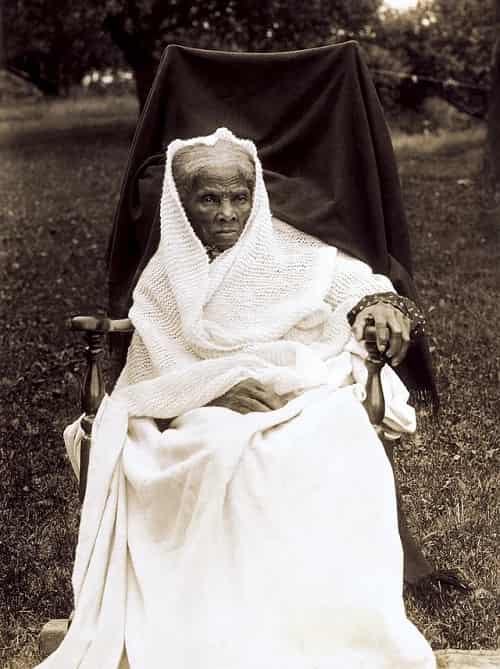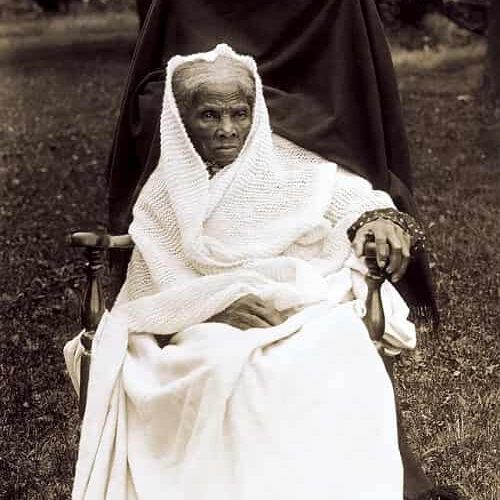Harriet Tubman: The Moses of Her People

Harriet Tubman is one of the most celebrated figures in American history. Her life story is filled with bravery, determination, and a relentless fight for freedom and justice.
Known as the “Moses of Her People,” Harriet Tubman dedicated her life to helping others escape slavery and live a life of dignity. This article will explore her incredible journey, from her early life in slavery to her heroic efforts on the Underground Railroad and beyond. Let’s dive into the inspiring Harriet Tubman story.
When Was Harriet Tubman Born?
Harriet Tubman was born around 1820 in Dorchester County, Maryland. Her birth name was Araminta Ross, and she was born into slavery, which meant she faced hardships from the very beginning. At that time, enslaved people were treated as property, and their lives were filled with suffering and struggle. Harriet’s exact birthdate is unknown because records for enslaved people were rarely kept. However, her impact on history is unforgettable.
Harriet Tubman’s Early Life
Harriet Tubman’s early life was marked by hardship and pain. As a child, she was forced to work long hours in harsh conditions. By the age of five, she was hired out as a nursemaid, where she had to take care of a baby. If the baby cried, she was punished severely. Later, she worked as a field hand, cook, and woodcutter. These experiences shaped her resilience and determination to fight for a better life.
One of the most defining moments of her early life happened when she was around 13 years old. Harriet was at a store when an overseer (a person who supervised enslaved workers) threw a heavy metal weight at another enslaved person. Instead, the weight hit Harriet in the head, causing a severe injury. This injury left her with lifelong health problems, including headaches, dizziness, and sudden episodes of falling asleep. Despite this, Harriet never let her physical challenges stop her from pursuing freedom.
Harriet Tubman’s Family
Harriet Tubman’s family played a significant role in her life. She was born to parents who were also enslaved. Her mother, Harriet “Rit” Green, and her father, Ben Ross, worked hard to provide for their children, even under the brutal conditions of slavery. Harriet had eight siblings, and the thought of her family suffering in slavery motivated her to take action.
In 1844, Harriet married a free Black man named John Tubman. While this marriage gave her a glimpse of freedom, it also highlighted the painful reality that she was still enslaved. Her desire to be truly free and to help her family escape slavery became her life’s mission.
What Happened to Harriet Tubman When She Was 13?
As mentioned earlier, Harriet Tubman faced a life-changing event when she was around 13 years old. The head injury she sustained from the overseer’s metal weight had a lasting impact on her health. She experienced frequent headaches, dizziness, and a condition called hypersomnia, which caused her to fall asleep suddenly without warning. Despite these challenges, Harriet’s spirit remained unbroken. She often spoke of having vivid dreams and visions, which she believed were messages from God. These experiences strengthened her faith and guided her in her later missions to free others.
How Did Harriet Tubman Escape?
Harriet Tubman’s own escape from slavery is a story of courage and determination. In 1849, she decided to flee after learning that she and her brothers were going to be sold to another plantation. Using the Underground Railroad—a secret network of safe houses and abolitionists—Harriet made her way to Philadelphia, Pennsylvania, where slavery was illegal.
Her journey was incredibly dangerous. She traveled by night, using the North Star as her guide, and relied on the kindness of strangers who were part of the Underground Railroad. Once she reached freedom, Harriet didn’t stay safe in the North. Instead, she chose to risk her life again and again to help others escape.
How Many Slaves Did Harriet Tubman Free?
Harriet Tubman’s most famous achievement is her work on the Underground Railroad. Over the course of 10 years, she made approximately 13 missions back to the South and helped around 70 enslaved people escape to freedom. Some of these people were her family members, including her parents and siblings. Harriet’s bravery and resourcefulness earned her the nickname “Moses,” after the biblical figure who led his people to freedom.
One of her most remarkable accomplishments was the Combahee Ferry Raid during the Civil War. As a scout and spy for the Union Army, Harriet helped plan and lead a military operation that freed more than 700 enslaved people in South Carolina. This made her the first woman in U.S. history to lead an armed military raid.
Harriet Tubman’s Later Life and Legacy
After the Civil War ended in 1865, Harriet Tubman settled in Auburn, New York, where she cared for her aging parents and continued to fight for justice. She became an active supporter of the women’s suffrage movement, advocating for women’s right to vote. She also established the Harriet Tubman Home for the Aged, a place where elderly African Americans could live with dignity and care.
Harriet Tubman passed away on March 10, 1913, at the age of 93. Her death was a result of pneumonia, but her legacy lives on. She is remembered as a symbol of courage, freedom, and the fight for equality. In 2016, the U.S. Treasury announced that Harriet Tubman would be featured on the $20 bill, making her the first African American woman to appear on U.S. currency.
How Did Harriet Tubman Die?
Harriet Tubman died of pneumonia on March 10, 1913, in Auburn, New York. By the time of her death, she had become a respected and beloved figure in her community. Despite facing countless challenges throughout her life, Harriet never gave up on her mission to help others. Her final words were, “I go to prepare a place for you,” reflecting her deep faith and belief in a better future.
Why Harriet Tubman’s Story Matters Today
Harriet Tubman’s story is more than just a chapter in history—it’s a source of inspiration for people around the world. Her courage, resilience, and unwavering commitment to justice remind us that one person can make a difference. She risked her life repeatedly to help others, proving that freedom and equality are worth fighting for.
Today, Harriet Tubman’s legacy continues to inspire movements for social justice and human rights. Her life teaches us the importance of standing up for what is right, even in the face of overwhelming odds. As we remember her incredible journey, we honor her contributions to creating a more just and equitable world.
Harriet Tubman’s life is a testament to the power of courage and determination. From her early life in slavery to her daring escapes on the Underground Railroad, and her later work as a spy and suffragist, Harriet Tubman’s story is one of resilience and hope. She freed hundreds of enslaved people, fought for women’s rights, and left a lasting legacy that continues to inspire generations.
By learning about Harriet Tubman’s life, we not only honor her memory but also gain valuable lessons about the importance of freedom, justice, and equality. Her story reminds us that even in the darkest times, one person’s bravery can light the way for others. Harriet Tubman truly was the “Moses of Her People,” and her impact on history will never be forgotten.
Frequently Asked Questions (FAQ) About Harriet Tubman
1. Who was Harriet Tubman?
Harriet Tubman was an African American abolitionist, humanitarian, and Union spy during the American Civil War. She is best known for her work on the Underground Railroad, where she helped enslaved people escape to freedom. She is often called the “Moses of Her People” for her leadership and bravery.
2. When was Harriet Tubman born?
Harriet Tubman was born around 1820 in Dorchester County, Maryland. Her exact birthdate is unknown because records for enslaved people were rarely kept.
3. What was Harriet Tubman’s early life like?
Harriet Tubman’s early life was filled with hardship. She was born into slavery and forced to work from a young age. At around 13, she suffered a severe head injury when an overseer threw a heavy metal weight at her. This injury caused lifelong health issues, but it didn’t stop her from fighting for freedom.
4. What happened to Harriet Tubman when she was 13?
When Harriet Tubman was around 13 years old, she was hit in the head by a heavy metal weight thrown by an overseer. This injury caused her to experience dizziness, pain, and sudden episodes of falling asleep for the rest of her life. Despite this, she remained determined and resilient.
5. How did Harriet Tubman escape slavery?
In 1849, Harriet Tubman escaped slavery using the Underground Railroad, a secret network of safe houses and abolitionists. She traveled by night, using the North Star as her guide, and eventually reached Philadelphia, Pennsylvania, where slavery was illegal.
6. How many slaves did Harriet Tubman free?
Harriet Tubman made approximately 13 missions to the South and helped around 70 enslaved people escape to freedom. She also played a key role in the Combahee Ferry Raid during the Civil War, which freed more than 700 enslaved people.
7. What was the Underground Railroad?
The Underground Railroad was a secret network of routes and safe houses used by enslaved African Americans to escape to free states and Canada. Harriet Tubman was one of its most famous “conductors,” guiding people to freedom.
8. What role did Harriet Tubman play in the Civil War?
During the Civil War, Harriet Tubman served as a scout, spy, and nurse for the Union Army. She provided critical intelligence and even led the Combahee Ferry Raid, which freed over 700 enslaved people.
9. What did Harriet Tubman do after the Civil War?
After the Civil War, Harriet Tubman settled in Auburn, New York, where she cared for her aging parents and became active in the women’s suffrage movement. She also established the Harriet Tubman Home for the Aged, a place for elderly African Americans.
10. How did Harriet Tubman die?
Harriet Tubman died of pneumonia on March 10, 1913, in Auburn, New York. She was 93 years old. Her final words were, “I go to prepare a place for you,” reflecting her deep faith.
11. Why is Harriet Tubman called the “Moses of Her People”?
Harriet Tubman earned the nickname “Moses of Her People” because, like the biblical figure Moses, she led her people to freedom. Her work on the Underground Railroad and her fearless leadership made her a symbol of hope and liberation.
12. Is Harriet Tubman on U.S. currency?
Yes, in 2016, the U.S. Treasury announced that Harriet Tubman would be featured on the $20 bill. This makes her the first African American woman to appear on U.S. currency.
13. What is Harriet Tubman’s legacy?
Harriet Tubman’s legacy is one of courage, resilience, and the fight for justice. She is remembered as a hero who risked her life to free others and worked tirelessly for equality and human rights. Her story continues to inspire people around the world.
14. Did Harriet Tubman have a family?
Yes, Harriet Tubman had a large family. She was one of nine children born to enslaved parents, Harriet “Rit” Green and Ben Ross. She also married a free Black man named John Tubman in 1844, though they later separated.
15. What challenges did Harriet Tubman face?
Harriet Tubman faced numerous challenges, including the physical and emotional abuse of slavery, a severe head injury, and the constant danger of being captured while helping others escape. Despite these obstacles, she remained steadfast in her mission.
16. How can I learn more about Harriet Tubman?
You can learn more about Harriet Tubman by visiting museums, reading books, or exploring online resources. The Harriet Tubman Underground Railroad National Historical Park in Maryland is a great place to start.

